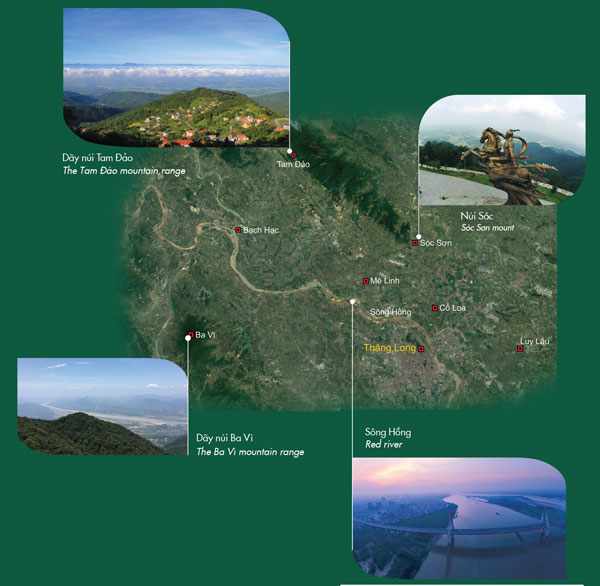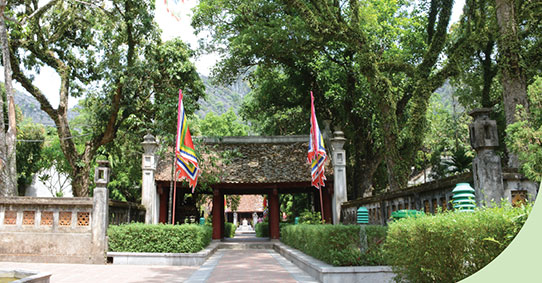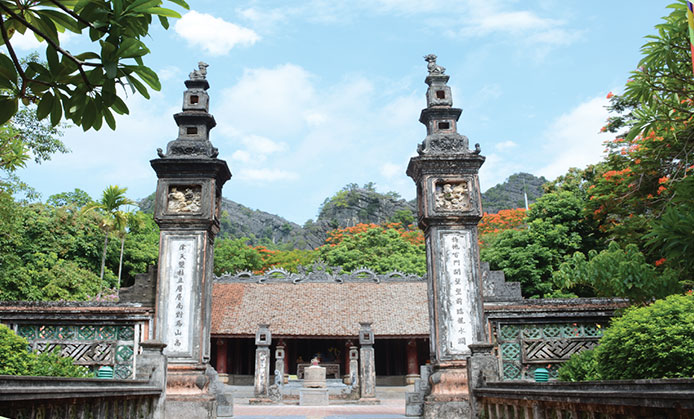Thăng Long - The 1000-Year Capital

Thăng Long - Hà Nội is a large plain which is surrounded by Ba Vì mount, Tam Đảo mount, Sóc Sơn mount ... and Red river. A system of waterways and roads that are interconnected facilitates Thăng Long’s transportation and cultural exchange with other regions across the country.
VIEW PANO
Thăng Long - The 1000-Year Capital
Ngô Thì Sĩ judged that Long Đỗ land (Thăng Long) “is protected by Tản Viên Mountain, Phú Lương river (Red river). This land is flat, so its inhabitants can have a prosperous life here ... It is located in the heart of the country and in the centre of four directions. Mountains act as a coat while rivers act as a belt. Both of them are to protect the body (the nation). The front sees the sea while the back sees rivers. The terrain of this land is rare, and provides many favorable conditions for a long-standing throne. Nowhere else in Đại Việt can be compared to this place”.
Extracted from Đại Việt sử ký tiền biên
VIEW PANO
The Capital-Transferring Edict
“Formerly, in the reign of King Pan Geng of the Shang Dynasty, the capital had been transferred five times; King Cheng of the Zhou dynasty also transferred the capital three times. The capital- transferring was not for the personal benefit of the kings but for the benefit of the following generations. It was done by Kings according to the Heaven’s will, and according to the wishes of their citizens. Therefore, if a favourable place where the capital can be built is found, then the capital-transferring should be done. If so, a country will prosper for a long time. In contrast, the Đinh and Lê dynasties only did what they wanted, disregarding the Heaven’s will and the good deeds by Shang and Zhou dynasties. This explains why the dynasties did not last for a long time, people could not lead a prosperous life, and everything could not develop on this land. I'm heart-broken about this, so we can't help transferring the capital to somewhere else.
Moreover, Đại La citadel, the former capital set up by King Gao Pian, is in the very heart of the universe. Its terrain evokes the figure of a winding dragon and a sitting tiger. This land is large, flat and high. Therefore, its inhabitants will not have to suffer from floods and darkness; everything will work out well there. After all lands of Việt have been surveyed, this land is actually the most appropriate place for a long-lasting capital as it contains important elements converging from four directions.
I want to take the most advantage of this land. What do you think, mandarins?”
VIEW PANO
Thăng Long Capital
King Lý Thái Tổ and other Kings in the early Lý dynasties are the ones who made great contributions to the building and completing of Thăng Long capital’s construction planning. Thăng Long capital consisted of three rings of protective walls: Đại La citadel (located in the outermost ring), Thăng Long citadel or Imperial citadel (located in the middle ring), and Long citadel or Forbidden City (located in the innermost ring).
Thăng Long has assumed the role as a capital and become a centre of supreme cultural, economic and political power of Việt Nam. Under dynasties, including the Lý, Trần, Lê, and through many ups and downs in the history, Thăng Long was sometime prosperous while some other time it was not. Above all, the role of the capital of a country can never be denied.
For more than 1000 years, Thăng Long - Hà Nội has almost continuously assumed the role as the center of the country. This further affirms the importance of the land of 1000-year cultural values, a long-standing political and economic center that represents the soul and wisdom of Việt Nam.
VIEW PANO
Thăng Long - The 1000-Year Capital



